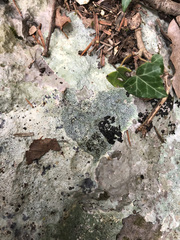Cladonia pyxidata

Cladonia pyxidata, commonly known as the Gray Cup Lichen, is a fascinating and visually striking species found within the rich biodiversity of the Comunidad Valenciana. This lichen is part of the Cladoniaceae family and is well-known for its intriguing structure and ecological role.
Characteristics:
- Appearance: The lichen is characterized by its distinctive, goblet or cup-shaped structures called "podetia," which are typically grayish-green. These podetia rise from a flat, flaky base, known as the thallus.
- Habitat: Cladonia pyxidata thrives in a variety of habitats, preferring open, sunny areas. It is commonly found on the ground, rotting wood, or as an epiphyte on tree bark.
- Ecological Importance: It plays a crucial role in ecosystems by contributing to soil formation, providing habitats for microfauna, and participating in nutrient cycling.
Notable Features:
- Reproduction: This lichen reproduces both sexually, through spores produced in its structures, and asexually, via fragmentation or dispersal of soredia.
- Adaptations: It is highly adaptable and can survive in extreme conditions, such as drought or poor soil quality, thanks to its symbiotic relationship with algae.
For those exploring the natural landscapes of the Comunidad Valenciana, Cladonia pyxidata offers a perfect example of the beauty and complexity of lichens, adding both to the aesthetic and ecological tapestry of the region.






